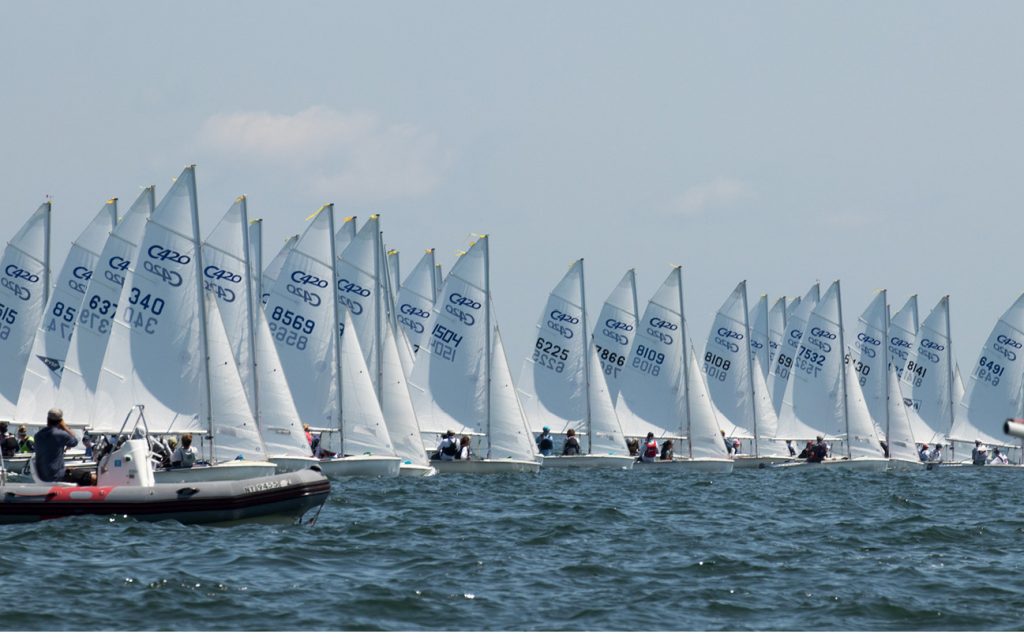At most starts, there are lots of boats maneuvering in tight quarters. If you want to emerge at the front of the pack, you need excellent boathandling skills. Fortunately, there are many ways to simulate and practice the moves you need to make at the starting line. Here are several drills to increase your chances of success.
Time and distance
Knowing how long it will take you to move from one place to another is critical for getting good starts, especially with heavier boats that don’t stop and start quickly. You can practice your timing skills easily with just a watch and a buoy. Set your watch for a rolling 2-minute countdown. Your goal is to be at the buoy, closehauled on starboard tack at full speed, every time your watch hits zero.
Start by sailing away from the buoy and then speeding up or slowing down as necessary to be near the buoy at full speed after 2 minutes. Practice this many times. Once you are good at it, try starting on either side of the buoy (as if it were the pin or RC boat). To practice acceleration, use a 1-minute rolling countdown and try to see how late you can be stopped and still get to full speed at zero.
Luffing in place
One of the most important skills for almost any start is the ability to stay in control of your boat at very slow speeds. To practice this, find a lobster pot or other buoy and try parking your boat right next to it. Time yourself to see how long you can stay there. To practice this, set your watch for a 1 (or 2) minute countdown and then don’t look at it. When it goes off, you must trim in and accelerate as quickly as possible.

One of the most important things about any start is where you are on the line. The most desirable spot is based on a combination of strategic and tactical factors. One of the first things you must do is decide where you want to go after the start. © Julia Cronin/OutrageousPhotography.net
Practice locating the line
For this drill you need an observer in a motorboat who sets up a starting line. Sail across the middle of the line on starboard tack, and raise your arm at the moment you think your bow is on the line. Then tack, sail back down below the line, and try it again. The observer should give you feedback on how well you do each time.
Drills with other boats
When you can practice starts with other boats and maybe even a coach, there are many other drills you can try. Here is my favorite exercise for dinghies:
Mystery start – This drill is great if you want to practice holding your position on the line, and it’s fun, too. The coach begins a normal two-minute dinghy start count- down. The mystery is that after the one-minute horn, he or she can signal the start at any time by counting down from 5 seconds to 0.
This means all boats must be luffing near the line on starboard tack by one minute, and must hold this position for an unknown length of time. The coach should make some starts right after the one-minute signal and hold others for up to 2 minutes later. This will reward those boats that are able to a) hold their position; and b) accelerate to full speed quickly. ■
This article originally appeared in David Dellenbaugh’s Speed & Smarts, The newsletter of how-to tips for racing sailors. If you want to sail faster and smarter, log onto SpeedandSmarts.com.
A resident of Easton, CT, Dellenbaugh was tactician and starting helmsman for America3’s successful defense of the America’s Cup in 1992. He’s a Lightning World Champion, two-time Congressional Cup winner, seven-time Thistle National Champion, two-time winner of the Canada’s Cup, three-time Prince of Wales U.S. Match Racing Champion, and a winner of the U.S. Team Racing Championships for the Hinman Trophy.




